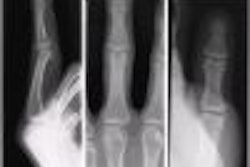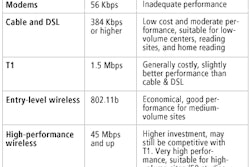USCS Equipment Technology Solutions
The primary factors affecting the maintenance costs of expensive clinical equipment and computers are the terms and conditions under which the equipment was purchased. Putting the appropriate requirements in writing can best protect a healthcare organization’s future operational costs, including maintenance.
The following 13 key elements should be considered at the time a request for purchase is made for any equipment.
- Specify your equipment needs by required results, not by manufacturer.
- Specify that the purchase price includes complete operating and maintenance manuals, schematic diagrams with part numbers, and updates as changes occur. You should also require the manufacturer to provide a recommended list of spare parts.
- Specify that the manufacturer must provide training in maintenance of the equipment maintenance to your selected personnel, and that the training be of the same quality provided to the manufacturer’s own service personnel.
- Specify a time limit for training that it is neither too long a wait, nor too short a limit to accommodate your needs.
- Specify that diagnostic software be provided, and that it include the manufacturer’s highest-level materials.
- Specify that all equipment software upgrades and field modifications be provided for the reasonable life of the equipment, at no additional cost.
- If buying previously owned equipment or equipment manufactured prior to 2000, specify that the equipment being provided is year-2000 compliant.
- Specify that the vendor make available its remote-diagnostic service feature for the life of the equipment regardless of how you pay for post-warranty service. If a service contract is not purchased, it is reasonable to pay the vendor’s time-and-material labor rate each time you use the remote-diagnostic feature.
- Don't accept extended warranties at the time of purchase, as these are simply standard warranties combined with a multiyear service contract. Standard warranties should be for one year. For equipment with no mechanical or electromechanical parts, a shorter warranty period is acceptable.
- Specify that "time-and-material rates," including flat-rate charges, for both repairs and parts and materials, as well as annual service contract costs, be disclosed.
- Specify that documentation via legible service reports in English (not numeric codes) be provided after each repair. Such documentation should also be included during the warranty period to provide verification that the new equipment is performing as expected.
- Specify that the warranty period begin after the installation is completed, acceptance testing is completed, and the equipment is in operating condition.
- Specify that an online uninterruptible power supply (UPS) be included for computerized portions of high-value purchases such as CTs, MRs, cath labs, angio suites, linear accelerators, computerized gamma cameras, and high-speed, large-volume laboratory analyzers.
AuntMinnie.com contributing writer
September 20, 2002
Kujawa is vice president, equipment resources for USCS Equipment Technology Solutions, a Brookfield, WI, company that manages the acquisition, maintenance, and operational costs for healthcare clinical and facility equipment.
Related Reading
Service-contract survival requires savvy negotiation, oversight, July 30, 2002
Medical imaging workstations: What you need to know, May 22, 2002
Workflow engineering essential for PACS implementation, May 2, 2002
Maximizing your investment in enterprise digital imaging, April 18, 2002
Speech recognition, structured reporting eyed for efficiency gains, March 16, 2002
Copyright © 2002 USCS Equipment Technology Solutions



















